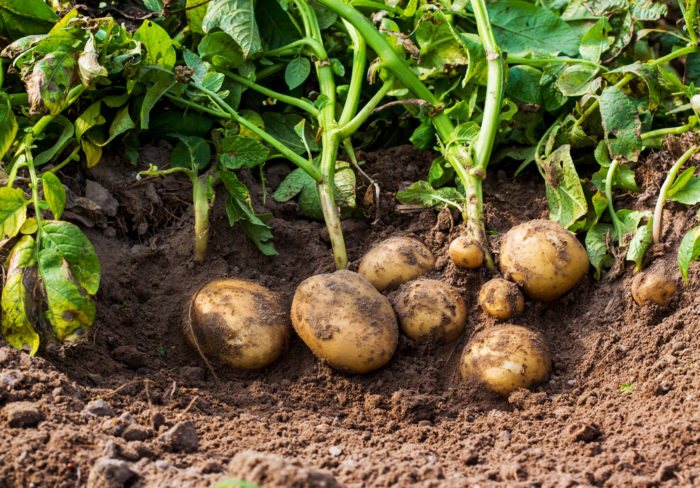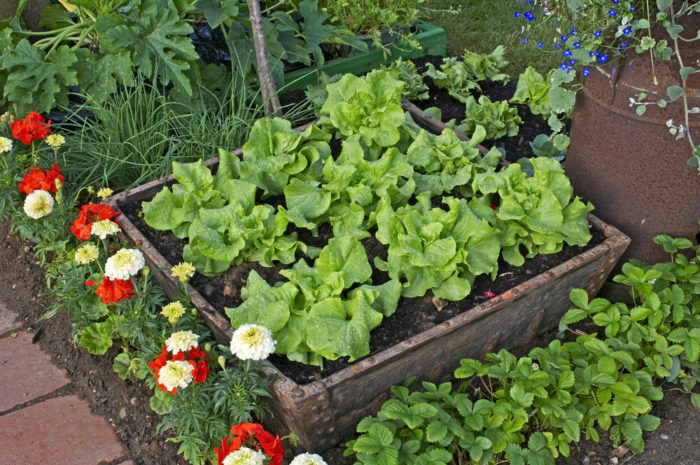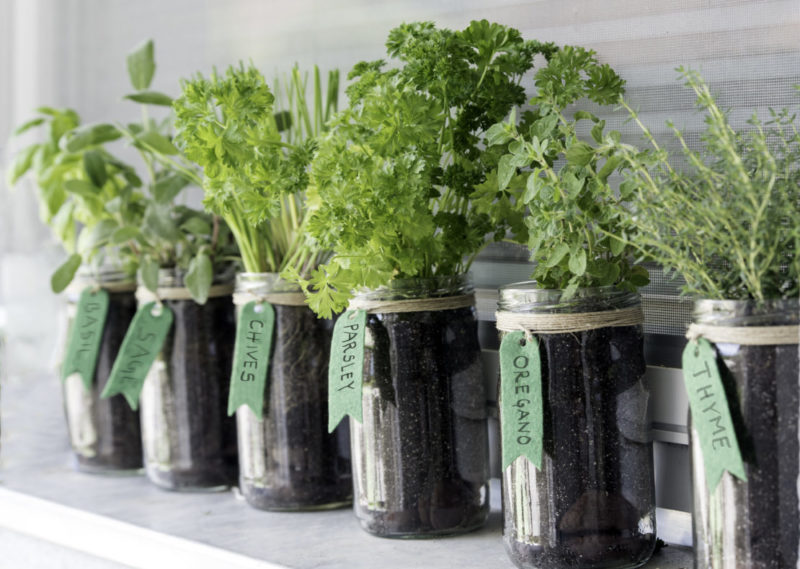Are you keen to start growing your own vegetables at home? There’s nothing quite as satisfying as serving up a plate with food that’s come from your own garden, but knowing where to start can be daunting.
The good news is that there are lots of options for you to start growing your own vegetables as a beginner, even if you’re low on space or in a rented home. Today I’ll be showing you some of the best starter-veggies that you can take from planter to plate.
Before you get going, it’s worth figuring out which plants will actually be the most practical for your home. Do you want crops that can basically look after themselves, or can you take the time to check on them every day, or every other day? Which veggies are you actually likely to eat? Try starting with native crops you might usually buy from the supermarket or greengrocer, and you’ll end up with less waste and bigger savings.
1. Tomatoes

Ignoring any technicalities about tomatoes being a fruit… Tomatoes are at the top of the list because they’re both an incredibly versatile crop AND they’re very easy to grow in any garden space – even in an indoor garden or on a balcony.
You can grow tomatoes from seed packets or from seedlings bought from a store. You can even plant the seeds from your next salad… Although your success might vary depending on the variety.
Tomatoes can be grown in the ground, or in pots, planters or grow-bags, as long as they get full sun – so save a spot in your sunniest corner. Take a look at our guide to growing tomatoes for more details.
2. Spring Onions

Spring onions are one of the easiest plants to look after when you start growing your own vegetables. A few rings of spring onion make a pretty garnish for stir-frys and rice bowl-style recipes, like poke. For this reason, I actually grow my spring onions on my kitchen windowsill, alongside my indoor herb garden.
To grow spring onions outside, sow your seeds in pots or the ground between March and July. They’ll be ready to harvest about 8 weeks later, and any you don’t use will flower and self-seed for a new batch.
If you don’t have much outdoor space, you can “grow” spring onions in a jar of water. Next time you cook with them, use the tops but save the bottom 2-3 inches. Submerge them in water so the base is covered (but the tops are sticking out), and they’ll slowly re-grow their leaves. Make sure to change the water every couple of days though, or it can start to generate an onion-y smell!
3. Potatoes

Potatoes are another rewarding crop to start growing your own vegetables, because they’re low-maintenance, high-yield and a dinner table crowd pleaser. Like tomatoes, potatoes are happy grown in soil, pots or grow-bags, and you can get them going
You can grow potatoes from ones that you have sprouting at home, but it’s better to source ‘seed’ potatoes that are certified to be free from crop viruses. Potatoes take 10 to 20 weeks to grow, and will need to be “earthed up” in the early stages – gradually adding soil until the potatoes are about 30cm deep.
Our guide to growing potatoes in your garden has more details.
4. Peas

Peas are known to be an easy plant to grow, even for beginners, and are another plant that will manage on a sunny kitchen windowsill. For outdoor veggies, plant peas (yep, even leftover fresh peas) into the soil from March to June.
The only challenge of peas is that they need something to climb up, like chicken-wire or staked netting. You should see your first pods appear in June and, if you keep picking them off as they’re ripe, your plants will keep producing until August or September.
5. Radishes

Radishes are a brilliant way to add colour and crunch to a salad or vegetable rice bowl. They’re also another versatile crop in terms of where they can be planted, so if you’re going to start growing your own vegetables in containers (instead of the ground), radishes are a good choice.
The ‘Scarlet Globe’ variety has the classic pink skin and white centre, and the ‘French Breakfast’ is another delicious option. Their size, speed and simplicity makes radishes one of the best plants to grow with children.
6. Beetroot

Beetroot is another root vegetable that’s super easy to grow. If you like fresh beetroot in salads, enjoy some boiled beetroot with your dinner or want to try your hand at home-pickling, give this veg a go.
Sow beetroot seeds into soil from March to July. When the seedlings sprout, reduce them down so they’re about 5cm apart so they can fill out. Beetroot will take 2+ months to grow, so check on them from May and harvest until September.
7. Lettuce

Need some leaves to supplement your salads? Lettuce only takes a month or so to grow, and you can plant it in such a way that it lasts all season. Start lettuces in seed trays to help you with spacing, or thin out seedlings in the bed so they’re about 15cm apart.
Although you can plant lettuce straight into the ground, they’re actually great candidates for container gardening, for example, growing them in stacked troughs to create a kind of vertical wall. This will also help to protect your lettuce from slugs and snails.
If you grow loose-leaf lettuce, you can harvest the outer leaves but keep the head planted to slowly regrow. A lettuce will replenish in about 2 weeks, so stagger your planting/harvesting and you can stay continually topped up with fresh leaves throughout the season.
8. Runner beans

Runner beans need lots of vertical space so, when you start growing your own vegetables, allocate a space near a trellis or wire fence for them to flourish. Like peas, the more you pick runner beans, the more they’ll replenish, so you’ll have a supply of yummy, healthy, homegrown veggies all summer.
Plant runner beans in May and June, and you’ll get your first harvest about two months later. For patio gardens or balconies, try growing runner bean plants in individual 5cm pots.
9. Courgette

Courgettes are another plant that might surprise beginners with their high yield. Just one or two plants will keep a small household stocked with these summer squash. As low-growing crops, courgettes are a good candidate for companion planting with a taller plant.
For the most delicious crops, you’ll need to keep your courgette plants topped up with weekly fertiliser (something like tomato food), as well as nutrient-rich compost. It’s best to harvest courgettes when they reach about 10cm long – slightly shorter than your supermarket varieties, but it will result in a stronger plant and generally a better quality harvest.
Start Small and Work Up Gradually
When you’re itching to start growing your own vegetables, it’s tempting to plant heaps of everything and hope for the best. The thing is, if the “best” happens, you’re going to end up with a LOT of crops all at once – and you’ll be forced to foist them on friends, family and neighbours! Or, the worst case scenario happens, and you’ll spend all summer fighting off garden pests and struggling to keep up with the needs of even the most low-maintenance crops.
Unless you’ve got a lot of time and several pairs of helping hands, it’s typically easier to start with small numbers of a limited variety of crops, and expand your kitchen garden from there. Remember to stagger your planting, and you’ll be amazed at your own green thumbs in no time!

Save this pin for later






